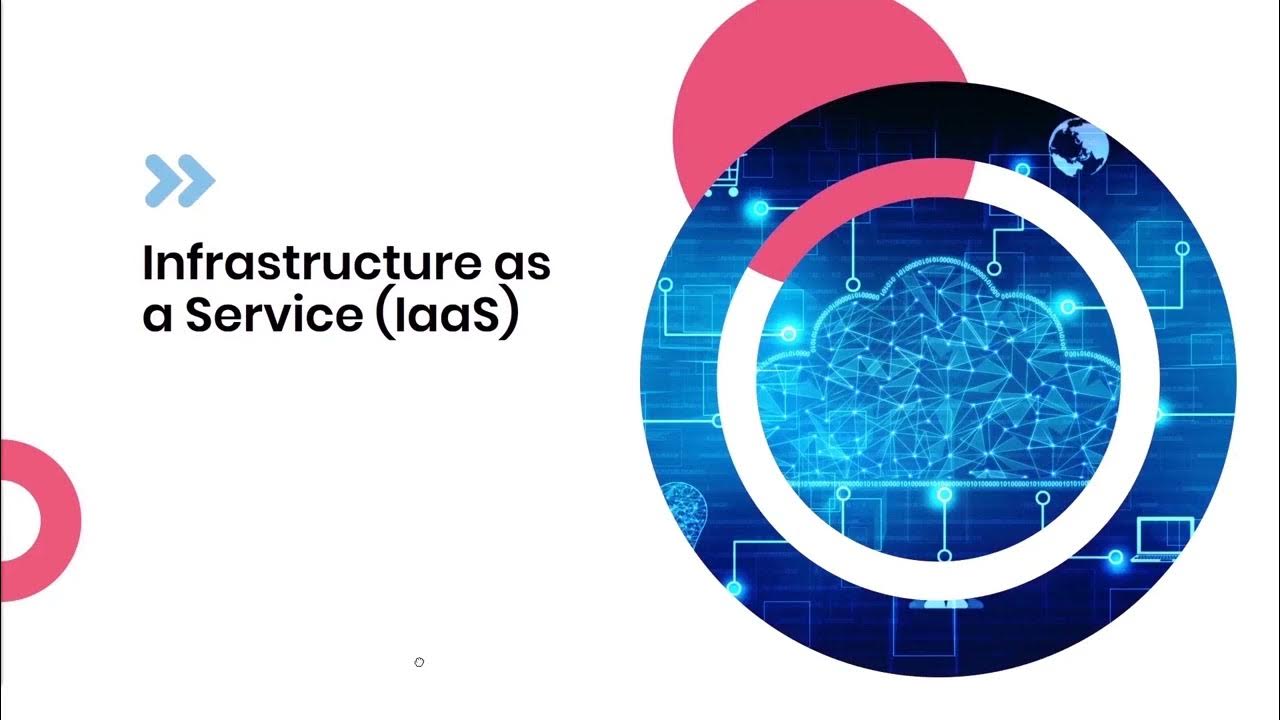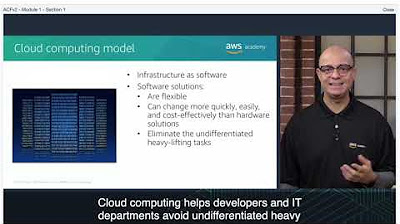Introduction
Summary
TLDRThis Google Cloud computing foundations course module introduces cloud computing, its impact on tech and business, and compares it with traditional architectures. It covers IaaS, PaaS, and SaaS, explores Google Cloud services like compute, storage, big data, and ML, and examines the Google Network's role. The module ends with a quiz on the discussed topics.
Takeaways
- 🌟 **Cloud Computing Definition**: The course will start with defining what cloud computing is.
- 🏗️ **Cloud vs. Traditional Architecture**: You'll compare cloud computing with traditional IT architectures.
- 🔍 **Cloud Service Models**: You'll learn about IaaS, PaaS, and SaaS, the three main service models in cloud computing.
- 🛠️ **Google Cloud Services**: An introduction to Google Cloud's compute, storage, big data, and machine learning services.
- 🌐 **Google Network**: Understanding how the Google Network powers cloud computing services.
- 📈 **Impact on Technology and Business**: Exploring the effects of cloud computing on technology and business.
- 🏛️ **Physical vs. Virtual vs. Cloud**: Comparing physical servers, virtual servers, and cloud-based architectures.
- 💡 **Cloud Computing Concepts**: Gaining an understanding of the foundational concepts of cloud computing.
- 📚 **Module Structure**: The module is structured with a definition, comparison, examination of service models, and exploration of Google Cloud architecture.
- 📝 **Quiz and Recap**: The module concludes with a quiz to test your knowledge and a recap of the topics covered.
Q & A
What is the main focus of Module 1 in the Google Cloud computing foundations course?
-The main focus is to help learners identify what the cloud is and its impact on technology and business.
After completing Module 1, what should a learner be able to do?
-A learner should be able to identify cloud computing, compare physical, virtual, and cloud architectures, differentiate between IaaS, PaaS, and SaaS, and understand Google Cloud services and the Google Network's role in cloud computing.
What are the three main service models in cloud computing mentioned in the script?
-The three main service models are Infrastructure as a Service (IaaS), Platform as a Service (PaaS), and Software as a Service (SaaS).
What is the purpose of the Google Cloud compute, storage, big data, and ML services?
-These services are designed to provide scalable, reliable, and efficient solutions for various computing needs, including data storage, processing, and machine learning.
How does the Google Network contribute to cloud computing?
-The Google Network powers cloud computing by providing a robust, global infrastructure that enables fast and reliable data transfer and connectivity.
What is the definition of cloud computing provided in the module?
-The definition of cloud computing is not explicitly provided in the script, but it is likely to be discussed within the module as the delivery model for computing services where resources are provided over the internet.
What is the difference between physical and cloud architectures as discussed in the module?
-Physical architectures refer to on-premises hardware and infrastructure, while cloud architectures involve using remote, off-premises resources accessed via the internet.
What is the role of IaaS in cloud computing?
-IaaS provides virtualized computing resources over the internet, allowing users to deploy and manage their own virtual machines, storage, and networking.
What is the role of PaaS in cloud computing?
-PaaS offers a platform for developers to build, deploy, and manage applications without worrying about the underlying infrastructure.
What is the role of SaaS in cloud computing?
-SaaS delivers software applications over the internet, typically on a subscription basis, where the provider manages the infrastructure and application software.
What is the concluding activity of the module?
-The module concludes with a short quiz and a recap of the topics covered to reinforce the learning.
Outlines

Этот раздел доступен только подписчикам платных тарифов. Пожалуйста, перейдите на платный тариф для доступа.
Перейти на платный тарифMindmap

Этот раздел доступен только подписчикам платных тарифов. Пожалуйста, перейдите на платный тариф для доступа.
Перейти на платный тарифKeywords

Этот раздел доступен только подписчикам платных тарифов. Пожалуйста, перейдите на платный тариф для доступа.
Перейти на платный тарифHighlights

Этот раздел доступен только подписчикам платных тарифов. Пожалуйста, перейдите на платный тариф для доступа.
Перейти на платный тарифTranscripts

Этот раздел доступен только подписчикам платных тарифов. Пожалуйста, перейдите на платный тариф для доступа.
Перейти на платный тариф5.0 / 5 (0 votes)






